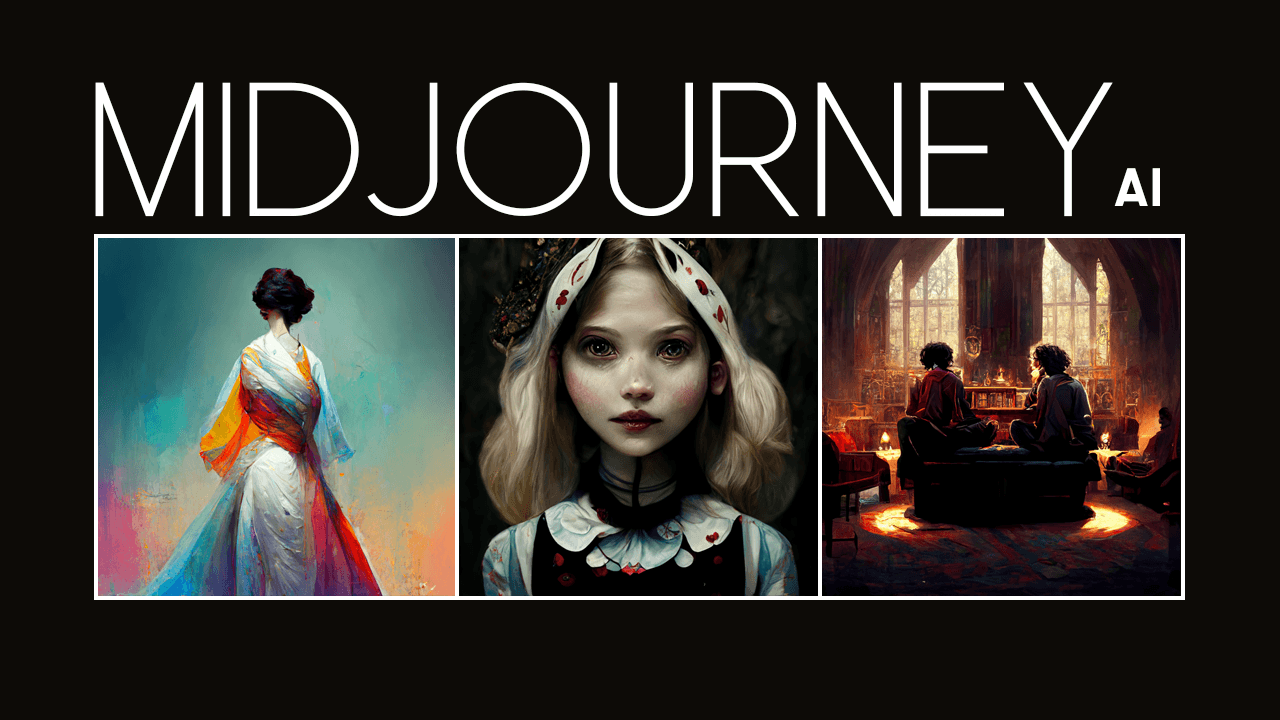How to Use the 'no' Command/Parameter for People-Free Prompts in Midjourney
Published on

Introduction to Using the 'no' Command/Parameter in Midjourney
Midjourney has revolutionized the world of AI-generated art, offering a platform where imagination meets algorithms. However, like any tool, it comes with its own set of challenges. One such challenge that many users face is the unwanted inclusion of human figures in their generated art pieces.
The focus of this article is to guide you through mastering the 'no' command/parameter in Midjourney to exclude people from your creations. Whether you're a seasoned user or a newcomer, this comprehensive guide will provide you with the insights you need to perfect your Midjourney experience.
How to Remove People from Midjourney
What is the 'no' Command/Parameter?
The 'no' command/parameter is a feature in Midjourney that allows you to specify elements you want to exclude from your generated art. For instance, if you're aiming for an abstract piece devoid of human figures, you can use the 'no people' parameter to achieve this.

Real-World Examples of Success
- Abstract Landscapes: Users have successfully created abstract landscapes by using the command
--no people, animals. - Still Life: For still life compositions without any human interference, the command
--no people, faceshas proven effective.
Why It's Sometimes Ignored
However, the 'no' command/parameter isn't foolproof. There are instances where Midjourney may still include elements you wanted to exclude. This could be due to:
- Complexity of the Prompt: The more complex your prompt, the higher the likelihood that Midjourney might overlook the 'no' parameter.
- Algorithmic Limitations: Midjourney's algorithms are trained on vast datasets, which may sometimes result in unintended inclusions.
Workarounds for Effective Use
If you find that the 'no' command/parameter isn't working as expected, here are some strategies you can employ:
- Be More Specific: Instead of just saying
--no people, try--no human figures, faces. - Use Negative Weights: You can assign negative weights to unwanted elements for more control. For example,
--no people -5.
By understanding how to effectively use the 'no' command/parameter, you can significantly improve your Midjourney experience, ensuring that your artistic vision comes to life just the way you want it.
What do You Do When Midjourney Ignores '--no humans' Command
Understanding the 'no' Command/Parameter Limitations
Even with the best of intentions and the most precise commands, Midjourney may sometimes ignore the 'no' command/parameter. This section aims to delve into why this happens and how you can troubleshoot these issues effectively.

Reasons for Ignored Commands
- Algorithmic Constraints: Midjourney's algorithms are not perfect and may sometimes misinterpret the 'no' command/parameter.
- Prompt Ambiguity: If your initial prompt is ambiguous or too complex, the 'no' command may be overlooked.
Official Guidelines on Troubleshooting
According to Midjourney's official documentation, there are several ways to make the 'no' command more effective:
- Simplifying the Prompt: The simpler and more straightforward your prompt, the easier it is for the algorithm to understand your requirements.
- Using Negative Weights: Assigning negative weights to unwanted elements can increase the effectiveness of the 'no' command.
User-Devised Solutions
When official solutions fall short, the user community often comes up with ingenious workarounds:
- Chain Commands: Some users have found success by chaining multiple 'no' commands, like
no humans, no faces. - Iterative Generation: Generate the art in iterations, tweaking the 'no' command at each step based on the output.
By employing these strategies, you can significantly improve the reliability of the 'no' command/parameter in your Midjourney projects.
How to Tell Midjourney Not to Do Something
Navigating the world of AI-generated art with Midjourney is like having a paintbrush that understands your spoken word. But what happens when your AI paintbrush gets a little too enthusiastic and adds elements you never asked for? Enter the --no parameter, a feature designed to give you more control over your artistic outcomes.

The Basics of Using --no in Midjourney
The --no parameter is your magic wand for specifying what you don't want in your generated art. Here's how it works:
- Syntax: Simply append
--noto your prompt, followed by the elements you wish to exclude. - Separator: Use commas to separate multiple items.
Sample Prompts
- For a People-Free Landscape:
mountain landscape --no people, animals - For an Object-Only Still Life:
still life --no fruit, faces
Why 'Don't' and 'Without' Are Not Your Friends
You might think that using "don't" or "without" in your prompt would suffice. Think again. Here's why:
- Misinterpretation: Midjourney considers every word in your prompt as an element you want to include.
- Counterproductive: Using "don't" or "without" can actually result in those very elements appearing in your art.
Examples to Avoid
- Bad Prompt:
cityscape without cars - Better Prompt:
cityscape --no cars
The Power of Multi-Prompting and Negative Weights
For those who love to tinker, the --no parameter can also be used as part of a multi-prompt with negative weights. Here's how:
- Equivalent to
--no: Using a negative weight in a multi-prompt is the same as using--no.
Sample Multi-Prompt
- For a Fruit-Free Still Life:
still life gouache painting:: fruit::-.5
Best Practices for Using Midjourney No Command
- Be Specific: The more specific your
--nocommands, the better. - Combine Commands: Feel free to combine
--nowith other commands for nuanced results. - Iterate: If the first try isn't perfect, tweak your
--nocommands and generate again.
By mastering the --no parameter, you're not just avoiding unwanted elements; you're taking an active role in the creative process. So go ahead, make your next Midjourney project a true reflection of your artistic vision.
How to Make Better Images with Midjourney 'no' Parameter
Advanced Techniques for the 'no' Command/Parameter
The 'no' command/parameter is not just for removing unwanted elements; it can also be a powerful tool for enhancing the overall quality of your generated art. Let's explore some advanced techniques that can take your Midjourney creations to the next level.

Fine-Tuning with Negative Weights
- Example:
no humans -10, no animals -5 - Effect: This gives a higher priority to removing humans over animals in the generated art.
Combining with Other Commands
You can combine the 'no' command with other Midjourney commands for more nuanced control:
- Example:
sunset over ocean, no people, high resolution - Effect: This will generate a high-resolution image of a sunset over an ocean, devoid of any human figures.
Practical Examples and Codes
Here are some practical examples with actual working sample codes:
- For an Abstract Landscape:
mountain landscape, no humans, no animals, high contrast - For a Still Life Composition:
bowl of fruit on table, no people, no background noise, vibrant colors
By mastering these advanced techniques, you can create more complex and nuanced art pieces that align closely with your artistic vision.
Conclusion: Your Comprehensive Guide to the 'no' Command/Parameter in Midjourney
After journeying through the intricacies of the 'no' command/parameter in Midjourney, it's time to consolidate what we've learned. This guide aimed to be your go-to resource for mastering this versatile feature, and we've covered a lot of ground to ensure you can create people-free art with confidence.
Key Strategies for Effective Use
To recap, here are some key strategies for effectively using the 'no' command/parameter:
-
Be Specific: The more specific you are with your 'no' commands, the better the results. For example, use
no human figures, facesinstead of justno people. -
Leverage Negative Weights: Use negative weights to give more emphasis to certain elements you want to exclude. For instance,
no humans -10will make it more likely that humans are excluded from the generated art. -
Combine Commands: Don't hesitate to combine the 'no' command with other Midjourney commands for more nuanced results. For example,
sunset over ocean, no people, high resolution. -
Iterative Generation: If the first output isn't perfect, use it as a stepping stone. Tweak your 'no' commands and generate again.
-
Consult Official Documentation: Always keep an eye on Midjourney's official guidelines for any updates or new features related to the 'no' command.
Final Thoughts
The 'no' command/parameter in Midjourney is a powerful tool, but like any tool, it requires a bit of finesse and understanding. Whether you're a casual user or an aspiring digital artist, mastering this feature can significantly elevate your creative process.
So go ahead, experiment with these techniques, and don't let unwanted elements hinder your artistic vision. With the right commands and a bit of practice, the sky's the limit for what you can create with Midjourney.
And there you have it—a comprehensive guide to mastering the 'no' command/parameter in Midjourney. This article has been designed to be a thorough, technical, and highly detailed resource for anyone looking to perfect their use of this feature. Thank you for reading, and happy creating!
Frequently Asked Questions About Midjourney's 'no' Command/Parameter
How do you say 'no' in Midjourney?
In Midjourney, you can use the 'no' command or parameter to specify elements you want to exclude from your generated art. For example, if you want to create a landscape without any people, you can use the command landscape, no people. This will instruct Midjourney to generate a landscape art piece that excludes human figures.
How do you exclude characters in Midjourney?
To exclude specific characters or elements in Midjourney, you can use the 'no' command followed by the elements you wish to exclude. For instance, if you want to generate a fantasy scene without any dragons, you could use the command fantasy scene, no dragons. This will produce a fantasy art piece that doesn't include dragons.
What is the meaning of 'IW' in Midjourney?
The term 'IW' in Midjourney typically stands for "Image Width." It's a parameter that allows you to specify the width of the generated image. For example, using IW=1920 would set the image width to 1920 pixels. This parameter is useful for tailoring the dimensions of your generated art to fit specific requirements or formats.
How do I stop Midjourney from adding text?
If you want to prevent Midjourney from adding any text elements to your generated art, you can use the 'no' command followed by the word 'text'. For example, the command abstract art, no text will generate an abstract art piece without any textual elements. This is particularly useful when you want the focus to be solely on the visual aspects of the art.
